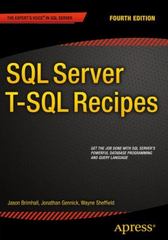Question
Institute Demo (70) The following is a simple example of aggregation. In this example we have an Institute which has a number of departments, and
- Institute Demo (70) The following is a simple example of aggregation. In this example we have an Institute which has a number of departments, and each department has a number of students, as shown below. (In Java Lanaguage)
Student class (10)
Has three instance variables:
name and dept are of type String
id is an int
Default constructor uses mutators to set name and dept to and id to 0.
The other constructor has three parameters for Siring name, int id, and String dept and uses the mutators to set the instance variables for these values.
There are three mutators and three accessors methods for the three instance variables.There is a toString() method which returns the name, id and dept as a String on a single line
Department class (10)
Has two instance variables.
deptName a String variable
studentList an ArrayList of type Student
Default constructor uses the mutator to set deptName to
The other constructor has a String parameter for the deptName and uses a mutator to set the instance variable for this value.
method addStudent has a reference to a Student as a parameter and a void return.
It adds the reference to the Student to the studentList
method getStudentList has a no parameters and a reference to an ArrayList of type Student as a return value.
It returns a reference to the ArrayList studentList for this department
There is a mutator and accessor method for deptName.
Institute class (20)
Has two instance variables.
instituteName a String variable
departmentsList an ArrayList of type Department
Default constructor uses the mutator to set instituteName to
The other constructor has a String parameter for the instituteName and uses a mutator to set the instance variable for this value.
There is a mutator and accessor method for instituteName.
method addDepartment has a reference to a Department as a parameter and a void return.
It adds the reference to the Department to the departmentList
method getDepartmentsList has a no parameters and a reference to an ArrayList of type Department as a return value.
It returns a reference to the ArrayList departmentsList for this department
method getTotalStudentsInInstitute has no parameters and returns an int this may be done with enhance for or regular for
set noOfStudents to 0
for each department
for each student in the department
increment the noOfstudents by 1
return noOfstudents
InstituteDemo class (30)
Create a Scanner to read from the keyboard
Create a Random class object with a seed of 5
Create a new Institute named BITS
Create a Department CS named CS
Create a Department EE named EE
Create a Department Other named Other
Add each Department to the institutes departmentsList ArrayList
Do 6 times
Request and read in a students name
Request and read in a students Department
Generate a student ID from 1 to 100000 using the Random object you created
Create a student using the name, id and department information
Add the student to the appropriate departments studentList
Produce the output shown below. (Note: Dont forget the last line with the total number of students. Also note that students are list by department)
Sample Input:
Please enter the student name: Ciro
Please enter the Department name CS or EE: CS
Please enter the student name: Armando
Please enter the Department name CS or EE: EE
Please enter the student name: Max
Please enter the Department name CS or EE: EE
Please enter the student name: Pedro
Please enter the Department name CS or EE: YY
Please enter the student name: Jairo
Please enter the Department name CS or EE: CS
Please enter the student name: Simon
Please enter the Department name CS or EE: EE
Sample Output
Institute Name: BITS
Ciro 79488 CS
Jairo 14507 CS
Armando 50093 EE
Max 33475 EE
Simon 17606 EE
Pedro 69425 YY
Total students in institute: 6
Step by Step Solution
There are 3 Steps involved in it
Step: 1

Get Instant Access to Expert-Tailored Solutions
See step-by-step solutions with expert insights and AI powered tools for academic success
Step: 2

Step: 3

Ace Your Homework with AI
Get the answers you need in no time with our AI-driven, step-by-step assistance
Get Started


